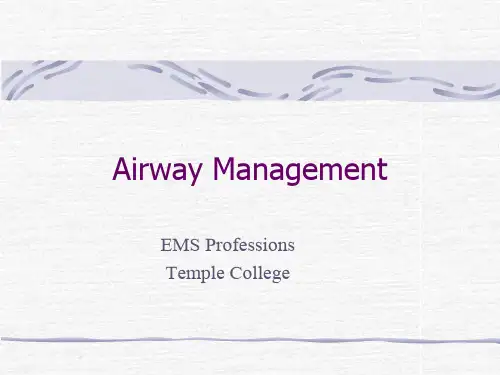Why is this so important?
Brain death occurs rapidly; Other tissue follows EMS providers can reduce additional injury/disease EMS providers often neglect BLS airway & ventilation skills
Anatomy of the Upper Airway
Oropharynx
Teeth Tongue
Lg muscle attached at mandible and hyoid bones Most common airway obstruction
Palate
Roof of mouth Separates oro- & nasopharynx Anterior=hard palate; Posterior=soft palate
“pocket” formed by the base of tongue & epiglottis
Anatomy of the Upper Airway
Anatomy of the Upper Airway
Sinuses
cavities formed by cranial bones
act as tributaries for fluid to & from eustachian tubes & tear ducts
Definitions
What is Airway Management?
How does it differ from spontaneous,
manual or assisted Ventilations?







